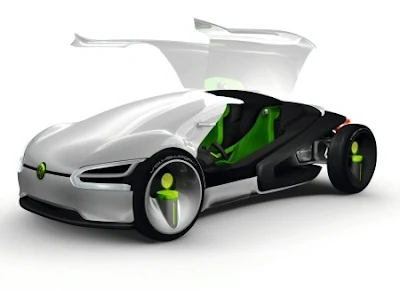Electronics will replace most of the mechanical systems, even the mid range model will be fitted with sensors, cameras, computer screens and wifi connections. Safety systems will move from passive systems like air bags to active systems that use radars and cameras to watch out for dangers.
Most of the future cars will have hard drivers, used as core of the car’s entertainment system, storing hour’s music and video. This will combine with sensor and mapping technology to keep track of every twist and turn. This hard drive will form a sort of black box recorder for the cars.
Lane departure warning
Two integrated cameras will monitors the edge of the road and centre line, a warning sound will emanate if the car veers from its path and an intermittent vibration will be felt in the steering wheel. Additional censored can be used to enhance the accuracy in bad weather. A 360 network of radar and laser sensor will eliminate blinds spots.
Night vision
Conventional night vision system uses head-up display and shows real images, a future version will be a picture processing concept that converts poorly visible objects into warning depicted by a full width LED bar that will run at the bottom of the windshield, indicating at a glance the number of objects and their approximate position.
Intelligent parking assist
The new technology will help cars neatly steer themselves backward into a parking lot without the driver even touching the steering wheel. IPA will need to be manually programmed before it swings into operation. Once this is don you can just sit back and let electronics do all the work. IPA technology is smart and can parallel park the car or conduct a 90 man oeuvre into a driveway or garage.
Active cruise control
This system will combine distance sensing radar based cruise control with a multi beam laser that will register the width of and positions of the other moving objects, taking the sting out of tedious stop-and-go driving by reaccelerating in sync with the vehicle in front.
An international consortium of auto manufactures is coming up with standards for a system where car-to-car communication system will be possible. The vehicle will poll the oncoming traffics and pass data from car to car and alert drivers up and down the highway to accidents and weather conditions.
Cars will collect data that can be shared with dealers, manufactures and even other vehicles. Dealers will be able to do remote diagnostics to help troubleshoot a roadside breakdown.
 |
| Future cars |
 |
| Future cars |
 |
| Future cars |
 |
| Future cars |
 |
| Future cars |
 |
| Future cars |




